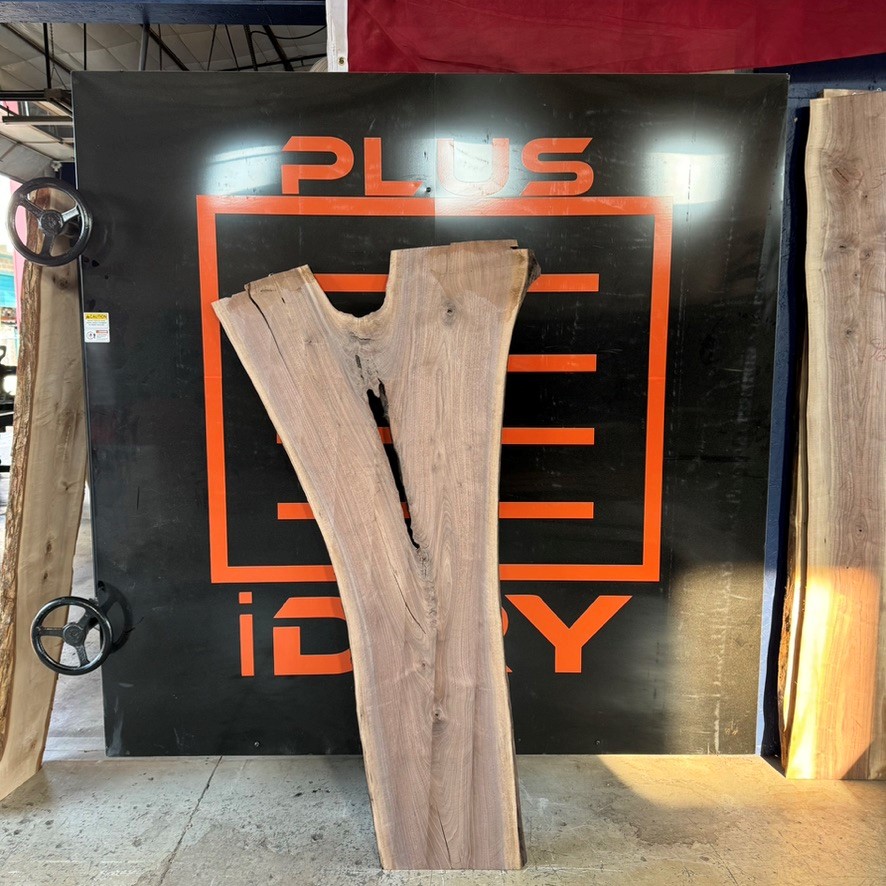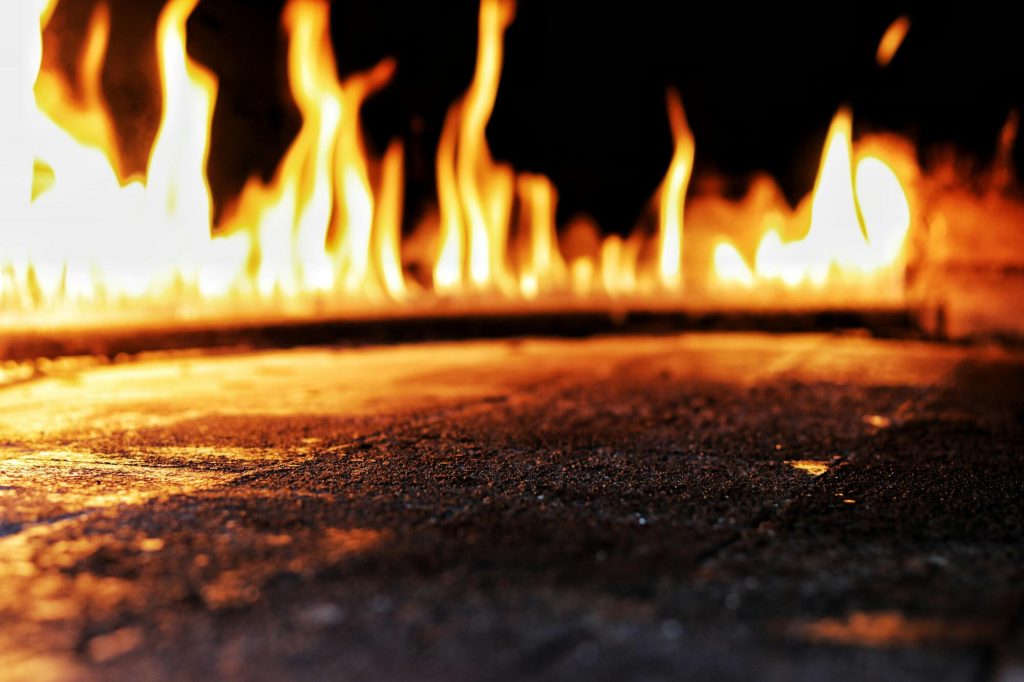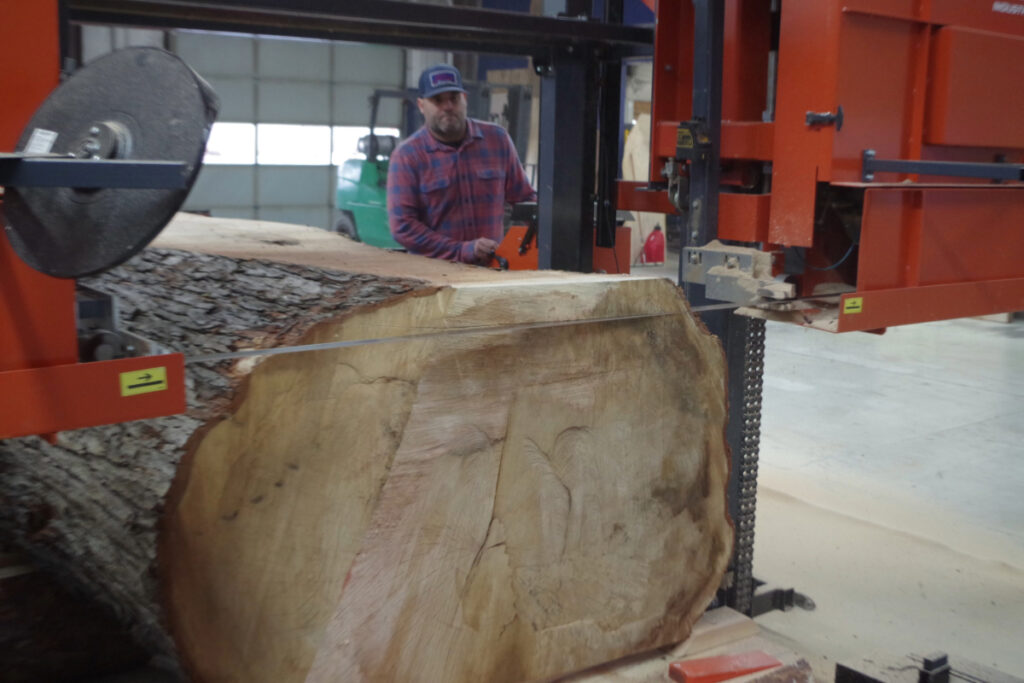
Contact: Zane Everman, Owner, Les Bois Milling, 208-801-3620; lesboismilling@gmail.com
Media contact: Steve Stuebner, 208-484-0295; steve.stuebner@gmail.com
Les Bois Milling creates Boise’s first large-scale urban sawmill to recycle trees into quality, kiln-dried slabs for wood furniture
BOISE – (Nov. 20, 2024) – Les Bois Milling, the city’s first large-scale urban sawmill facility, is converting recycled trees from our urban forest into quality, kiln-dried wooden slabs ready to be turned into hand-crafted furniture – things like dinner tables, conference tables and bar tops that have a strong, local backstory.
Previously, many trees in Boise were cut down, chipped up and sent to the Ada County landfill. End of story.
Les Bois Milling, owned by Zane Everman, opened for business earlier this year. He has been getting the wood-cutting, drying and flattening processes wired at his warehouse while building up his inventory and customer base. Tom Charters, one of the community’s top wood-workers, owner of Urban Forestry Products, is a big fan.
Charters has his own wood shop, but with his passive solar-drying system, it took three years to dry 3-inch-thick wooden slabs. Les Bois Milling’s large kiln can dry 4,000 board feet of wooden slabs in 2-3 months. Les Bois Milling also has a big, 67-inch Woodmizer WM 1000 saw for cutting big slabs up to 20 feet long and a Woodmizer MB 200 large leveling machine that ensures each wooden slab is absolutely flat after drying, ready for wood-working.
“It’s a huge time-saver,” says Charters, who builds custom furniture for Boise businesses and residential clients. “It’s increasing my production big-time. I’m really excited to support Zane, and I’m sure other wood-workers will as well. This is a one-stop shop that has the potential to really increase the production of locally hand-crafted, high-quality wood furniture for businesses or the home in our valley.”
“I love the idea of recycling unwanted trees into a quality product and giving them a second life,” Everman adds. “It’s a win-win-win situation.”
Live-edge wood slabs that local wood-workers are seeking include: black walnut, oak, elm, silver maple, Russian olive, locust, poplar and cottonwoods. Tall wooden slabs from all of those tree species are now available for sale at Les Bois Milling.
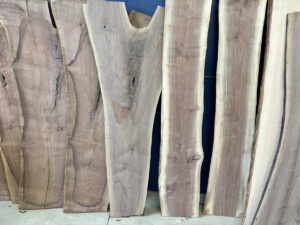
Everman’s urban sawmill facility has been a “critical missing link” that’s been needed to grow the capacity of handling recycled trees destined for the landfill, said Lance Davisson, executive director of the Treasure Valley Canopy Network(Network / TVCN). Two years ago, working together with Tom Charters, The Network was able to help recycle six trees to be made into furniture. This year, more than 50 trees have been salvaged through this partnership with Zane and Tom. “Now we can process every tree made available to us to be recycled into a usable product,” Davisson said. “Together with cities, tree care companies and other urban wood processing partners, we are scaling up to become a regional leader in what is becoming a national movement.”
Everman is a local wood craftsman, too. He makes custom conference tables, dining tables, kitchen islands and bars for a variety of clients. He seeks to become a central hub for the Treasure Valley wood-worker community, while also building new relationships with local tree services to source unwanted trees destined for the chipper and the landfill.
The project has strong environmental benefits in reducing the waste stream to the Ada County Landfill and retaining the carbon-storage of urban wood products.
Katie Sedacca, a Boise homeowner and volunteer with the Treasure Valley Canopy Network, had to remove two silver maple trees on her property to accommodate a home-addition project. She reached out to Davisson to learn how she could save her silver maples to be made into furniture. Davisson called Charters, and he came over to Sedacca’s house to assist with the tree-removal. One of the silver maples was rotten and unusable, but the other one was in good shape. Boise Tree – SavATree cut the silver maple into large, usable pieces and Charters worked with Arbor Safe Tree Service to come lift the large chunks of the silver maple onto a flatbed trailer with their crane. Charters then transported the wood to Les Bois Milling.
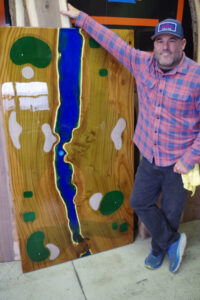
He’s going to make a new dining room table for Sedacca and her family.
“I was pretty upset about having to take down those two trees,” Sedacca said. “So for our new addition, I wanted it to be really authentic and original. We’ll have a pretty neat story to tell about our dining room table. I think it’s going to be the coolest thing!”
“Every tree that’s recycled at Les Bois has a backstory,” Everman says. “Each story will be captured in an inventory control App called AncesTREE. This will allow our customers to know everything about the wood they purchase.”
Pat Rainey, owner of Alpine Tree Service in Boise, said it makes sense for tree services to network with Everman to recycle valuable trees – especially hardwood trees – from getting chipped up as waste or turned into firewood. Saving those trees can save money and labor, too.
“It’s nice to see the wood being reclaimed for a good purpose,” Rainey says. “When we heard about Zane’s business, we were happy to help out – we have trucks for carrying the wood and cranes for loading and unloading the wood at Les Bois Milling. It works out well for both of us. We encourage other tree services to network with Zane and contribute to this worthwhile effort.”
Les Bois Milling’s services are a vital improvement that will grow Treasure Valley Canopy Network’s efforts to recycle large urban trees that need to be removed, Davisson said.
“What we’re building here in the Treasure Valley is a network of partnerships (businesses, cities, nonprofits, etc.) that can help scale-up the recycling of local urban trees and make high-quality wood products from them,” Davisson said. “I agree with Zane that it’s a win-win-win situation to be working on growing this network so we can all benefit from the sustainable use of our urban forest products – all while also creating more potential work and supply for local wood-workers. So this is ultimately also improving our economy.”


